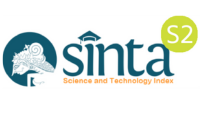SALAFI DA'WAH AMONG HIJRAH CELEBRITIES
DOI:
https://doi.org/10.31330/penamas.v36i2.711Abstract
Many Islamic movements have emerged with a different style from the mainstream. One of them is the Salafi movement. Although many parties reject Salafi preaching, not a few can also accept it, one of them is a group of artists who are growing their religious passion. They are known as hijra celebrities. This article discusses the process of acceptance of Salafi da'wah among hijra celebrities. This research is field research with a descriptive qualitative approach. The primary data of this study were obtained from in-depth interviews with preachers and celebrities who attended Salafi recitations. The research subjects were determined purposively after observing several Hijra artists. This research also utilizes various literature related to the Salafism theme and the phenomenon of Hijra celebrity. The results show that social media plays an important role in encouraging the development of the Hijra movement. Social media has connected Hijra celebrities with Salafi preachers. Some of the celebrities interviewed admitted that their interest in attending Salafi studies grew after listening to recitations through social media. Thus, Hijra celebrities are actively seeking and receiving Salafi preaching.
References
A’la, A. (2008). The Genealogy of Muslim Radicalism in Indonesia: A Study of the Roots and Characteristics of the Padri Movement. Journal of Indonesian Islam, 2(2), 267–299. https://doi.org/10.15642/JIIS.2008.2.2.267-299
Admin. (2019). Biodata Dr. Adian Husaini.
Al-Tamimi, M. bin A. A.-W. (2014). Kita>b al-Tawh}i>d: Allad}i> Huwa Haqq Alla>h ‘Ala> al-‘A>bid. Kuwayt: Maktabah Ahl al-Atsar.
Alamsyah, A. R., & Hadiz, V. R. (2017). Three Islamist Generations, One Islamic State: The Darul Islam Movement and Indonesian Social Transformation. Critical Asian Studies, 49(1), 54–72. https://doi.org/https://doi.org/10.1080/14672715.2016.1260887
Andirja, F. (2017). Tanya Jawab: Hukum Menggambar Makhluk. Retrieved November 15, 2023, from Al Ikhlas Dukuh Bima website: https://www.youtube.com/watch?v=Wep-Wo7MtcA
Bachtiar, T. A. (2018). Jas Mewah: Jangan Sekali-kali Melupakan Sejarah & Dakwah. Yogyakarta: Pro-U Media.
Bachtiar, T. A. (2023). Jejak Dakwah di Nusantara. Yogyakarta: Pro-U Media.
Badriyah, S. (2021). Arti Seleb: Apa Artinya? Retrieved from gramedia.com website: https://www.gramedia.com/literasi/arti-seleb/
Basalamah, K. (2017). Larangan Menggambar Makhluk Bernyawa. Retrieved November 15, 2023, from Lentera Islam website: https://www.youtube.com/watch?v=tH7JgTBTho4
Basalamah, K. (2020). Hukum Video Mutlak Haram ?? Retrieved November 15, 2023, from Deen Assalam website: https://www.youtube.com/watch?v=TIS-ZsDLUaQ
Celebrity. (2023). Retrieved from Oxford Learners Dictionaries website: https://www.oxfordlearnersdictionaries.com/definition/english/celebrity?q=celebrity
Chozin, M. A. (2013). Strategi Dakwah Salafi di Indonesia. Jurnal Dakwah, XIV(1).
Cook, D. (2017). Reviewed Work: Salafi-Jihadism: The History of an Idea by Maher Shiraz. The Middle East Journal, 71(3), 511–513. Retrieved from https://www.jstor.org/stable/90016488
Dewi, O. S., & Fata, A. K. (2021). Beragam Jalan Menjadi Salih: Model Dakwah Kelas Menengah Muslim Indonesia. Bimas Islam, 12(1), 1–32. https://doi.org/https://doi.org/10.37302/jbi.v14i1.325
Egi John Foreisythe. (n.d.). Retrieved November 21, 2023, from wikipedia website: https://id.wikipedia.org/wiki/Egi_John_Foreisythe
Fata, A. K. (2006). Liberalisme Islam di Indonesia: gagasan dan tanggapan tentang pluralisme agama.
Fata, A. K., & Ichwan, M. N. (2017). Pertarungan Kuasa Dalam Wacana Islam Nusantara. Islamica, 11(2), 339–364. https://doi.org/https://doi.org/10.15642/islamica.2017.11.2.339-364
Fata, A. K., & Khamdan, M. (2021). Jihad Global: Ideologi dan Jaringannya di Indonesia. Kontemplasi: Jurnal Ilmu-Ilmu Ushuluddin, 9(2), 205–226. https://doi.org/https://doi.org/10.21274/kontem.2021.9.2.205-226
Fauzan, P. I. (2023). Dari Masyumi ke Dewan Dakwah: Transformasi Gerakan Dakwah-Politik di Indonesia. Garut: STAIPI Press.
Firdaus. (2014). Revivalisme Islam: Studi Pemikiran Kritis Adian Husaini Terhadap Studi Islam Di Perguruan Tinggi Islam. UIN Sunan Ampel Surabaya.
Fitri, R. N., & Jayanti, I. R. (2020). Fenomena Seleb Hijrah: Tendensi Ekslusivisme dan Kemunculan Kelompok Sosial Baru. Muharrik, 3(1), 1–17. https://doi.org/https://doi.org/10.37680/muharrik.v3i01.222
Group, I. C. (2004). Indonesia Backgrounder: Why Salafism and Terrorism Mostly Don’t Mix, ICG Asia Report. Retrieved from https://www.crisisgroup.org/asia/south-east-asia/indonesia/indonesia-backgrounder-why-salafism-and-terrorism-mostly-dont-mix
Hafid, W. (2021). Menyoal Gerakan Salafi di Indonesia (Pro-Kontra Metode Dakwah Salafi). Al-Tafaqquh, 2(1), 29–48. https://doi.org/http://dx.doi.org/10.33096/altafaqquh.v2i1.87
Hasan, N. (2006). Laskar Jihad: Islam, Militancy, and the Quest for Identity in Post New Order Indonesia. New York: Cornell Southeast Asia Program.
Hidayat, D. (2012). Gerakan Dakwah Salafi di Indonesia pada Era Reformasi. Jurnal Sosiologi Masyarakat, 17(2), 115–133. https://doi.org/https://doi/org/10.7454/mjs.v17i2.3738
Husin, A. (1999). Philosophical and Sociological Aspects of Da’wah: A study of Dewan Dakwah Islamiyah Indonesia. New York: Columbia University.
Ibnu. (2023). Fikih Mazhab Salafi: Konstruksi & Implementasi Hukum Islam Kelompok Salafi di Indonesia. Tangerang Selatan: Lembaga Kajian Dialektika.
Iqbal, A. M. (2019). Internet dan Gerakan Salafi di Indonesia: Sebuah Kajian Awal. Yogyakarta: Diandra Kreatif.
Jahroni, J. (2017). The Political Economy of Knowledge: Sharia and Saudi Scholarship in Indonesia. Didaktika: Journal of Educational Policy Analysis, 1(1), 48–62.
Kamil, P. (2018). Peran Dakwah Melalui Media Cetak Untuk Pengembangan Masyarakat Islam (Studi Terhadap Peran Majalah Suara Hidayatullah Lampung). Jurnal Dakwah Dan Komunikasi, 3(2), 31–199. https://doi.org/http://dx.doi.org/10.29240/jdk.v3i2.645
Khalid Basalamah Official. (n.d.). Retrieved June 29, 2023, from youtube.com website: https://www.youtube.com/channel/UCJHC3VbFsp7kJ2NxPGltwiw
Kovacs, A. (2014). Saudi Arabia Exporting Salafi Education and Radicalizing Indonesia’s Muslims. Giga Focus, 7, 1–8.
Kuntowijoyo. (2018). Muslim Tanpa Masjid: Yogyakarta: IRCISOD.
Lauzi`ere, H. (2010). The Construction of Salafiyya: Reconsidering Salafism From The Perspective of Conceptual History. International Journal of Middle East Studies, 42, 369–389.
Machmudi, Y. (2008). The Emergence of New Santri In Indonesia. Journal of Indonesian Islam, 02(01), 69–102. https://doi.org/10.15642/JIIS.2008.2.1.69-102
Mediana Hutomo. (n.d.). Retrieved November 21, 2023, from wikipedia website: https://id.wikipedia.org/wiki/Meidiana_Hutomo
Miranti, E. (2020). Kiprah dan Perjuangan KH Mohammad Tidjani Djauhari MA untuk Muslimin Dunia. Retrieved June 28, 2023, from gontornews.com website: https://gontornews.com/dedikasi-tinggi-kh-moh-tidjani-djauhari-ma-untuk-muslimin-dunia/
Muhammad Hamzah (penyanyi). (n.d.). Retrieved November 21, 2023, from wikipedia website: https://id.wikipedia.org/wiki/Muhammad_Hamzah_(penyanyi)
Muliono, S., Suwarko, A., & Ismail, Z. (2019). Gerakan Salafi dan Deradikalisasi Islam di Indonesia. Religio: Jurnal Studi Agama-Agama, 9(2), 244–266. https://doi.org/https://doi.org/10.15642/religio.v9i2.1207
Muna, A. A. (2020). Ekspresi Keberagamaan Selebriti Hijrah: Sebuah bentuk ‘Accomodating Protest’ dan Ekonomi-Politik dari ‘Public Piety.’ Jurnal Kajian Islam Interdisipliner, 5(1), 1–16. https://doi.org/https://doi.org/10.14421/jkii.v5i1.1134
Nashir, H. (2016). Islamic Shari’a Movement: Reproduction of Salafīsm in Indonesia. The Social Sciences, 11(8), 1401–1406. https://doi.org/10.36478/sscience.2016.1401.1406
Pall, Z. (2016). The Making of Salafism: Modern History and Politics. The Middle East Journal, 70(2), 346–347.
Qodir, Z. (2008). Gerakan Salafi Radikal dalam Konteks Islam Indonesia (Tinjaun Historis). ISLAMICA: Jurnal Studi Keislaman, 3(1), 1–15. https://doi.org/https://doi.org/10.15642/islamica.2008.3.1.1-15
Rambo, L. R. (1999). Theories of Conversion: Understanding and Interpreting Religious. Social Compass, 46(3). https://doi.org/https://doi.org/10.1177/003776899046003003
Salafi. (2018).
Solahudin. (2011). NII Sampai JI: Salafy Jihadisme di Indonesia. Jakarta: Komunitas Bambu.
Suhadi, A. (2017). Liberalisasi Pemikiran Di Perguruan Tinggi Islam Di Indonesia (Studi Terhadap Buku “Virus Liberalisme Di Perguruan Tinggi Islam” Karya Adian Husaini). UIN Syarif Kasim Riau.
Utami, D. P. (2020). Penerapan Bahasa Jurnalistik pada Majalah Islam: Studi Kasus Majalah Hidayatullah. Komunika, 4(2), 129–135. https://doi.org/https://doi.org/10.32832/komunika.v4i2.4997
Wahid, A. B. (2011). Dakwah Salafi: Dari Teologi Puritan Sampai Anti Politik. Media Syari’ah, 13(2), 147–162. https://doi.org/10.22373/jms.v13i2.1783
Wahid, D. (2014). The Challenge of Democracy in Indonesia: The Case of Salafi Movement. Islamika Indonesiana, 1(1), 51–64.
Wahid, D. (2017). Inspirasi Jihad Kaum Jihadis: Telaah Atas Kitab-Kitab Jihad. Jakarta: Rumah Kitab.
Weismann, I. (2017). New and Old Perspectives in the Study of Salafism. Bustan: The Middle East Book Review, 8(1), 22–37.
Zaenuri, A., & Yusuf, H. (2019). Salafi’s Da’wah and the Phenomenon of Religious Piety among Hijrah Artists. Millati: Journal of Islamic Studies and Humanities, 4(2), 228–249. https://doi.org/10.18326/mlt.v4i2. 228-249
Zahara, M. N., Wildan, D., & Komariah, S. (2020). Gerakan Hijrah: Pencarian Identitas untuk Muslim Milenial di era Digital. Indonesian Journal of Sociology, Education, and Development (IJSED), 2(1), 52–65. https://doi.org/https://doi.org/10.52483/ijsed.v2i1.21









